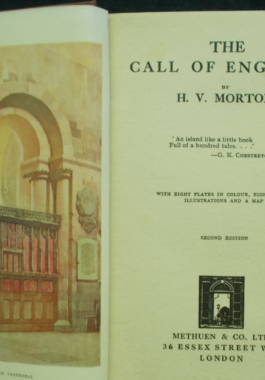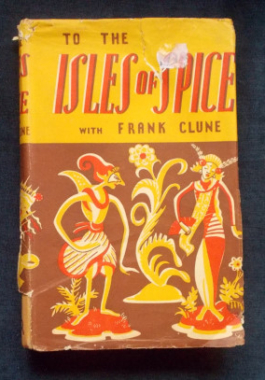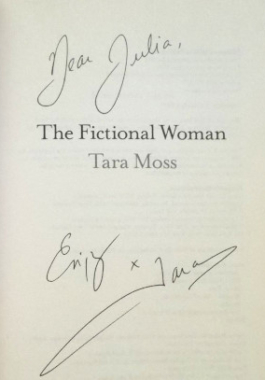- Sorry, this product is unavailable.
-

 Osiris the king, was slain by his brother Set, dismembered, scattered, then gathered up and reconstituted by his wife Isis and finally placed in the underworld as lord and judge of the dead. He was worshipped in Egypt from archaic, pre-dynastic times right through the 4000-year span of classical Egyptian civilization up until the Christian era, and even today folkloristic elements of his worship survive among the Egyptian fellaheen. This is the most thorough explanation ever offered of Osirism. With rigorous scholarship, going directly to numerous Egyptian texts, making use of the writings of Herodotus, Diodorus, Plutarch and other classical writers, and of more recent ethnographic research in the Sudan and other parts of Africa, Wallis Budge examines every detail of the cult of Osiris; he establishes a link between Osiris worship and African religions and investigates iconography; the heaven of Osiris as conceived in the VIth dynasty; Osiris's relationship to cannibalism, human sacrifice and dancing; Osiris as ancestral spirit, judge of the dead, moon-god and bull-god and so much more. Osiris seems to have been the earliest death and resurrection god, whose worship both caused and influenced later dieties, the cult of Osiris is highly important to all concerned with the development of human culture. Illustrated with pyramid texts (with translations) and reproductions of classical Egyptian art. First published in 1911 and regarded as the most authoritative work on Osirism.
Osiris the king, was slain by his brother Set, dismembered, scattered, then gathered up and reconstituted by his wife Isis and finally placed in the underworld as lord and judge of the dead. He was worshipped in Egypt from archaic, pre-dynastic times right through the 4000-year span of classical Egyptian civilization up until the Christian era, and even today folkloristic elements of his worship survive among the Egyptian fellaheen. This is the most thorough explanation ever offered of Osirism. With rigorous scholarship, going directly to numerous Egyptian texts, making use of the writings of Herodotus, Diodorus, Plutarch and other classical writers, and of more recent ethnographic research in the Sudan and other parts of Africa, Wallis Budge examines every detail of the cult of Osiris; he establishes a link between Osiris worship and African religions and investigates iconography; the heaven of Osiris as conceived in the VIth dynasty; Osiris's relationship to cannibalism, human sacrifice and dancing; Osiris as ancestral spirit, judge of the dead, moon-god and bull-god and so much more. Osiris seems to have been the earliest death and resurrection god, whose worship both caused and influenced later dieties, the cult of Osiris is highly important to all concerned with the development of human culture. Illustrated with pyramid texts (with translations) and reproductions of classical Egyptian art. First published in 1911 and regarded as the most authoritative work on Osirism. -
 From 1851, in the space of little more than a decade, the world was reshaped by technology, trade, mass migration and war. As instantaneous electric communication bridged the vast gulfs that separated human societies, millions of settlers travelled to the far corners of the Earth, building vast cities out of nothing in lightning-quick time. A new generation of fast steamships and railways connected these burgeoning frontier societies, shrinking the world and creating an interlinked global economy. Fortune-seekers and ordinary migrants journeyed to these rapidly expanding frontiers, savouring the frenetic activity and optimism of the boom-towns of the 1850s in Australia, New Zealand the United States. This is a story not only of rapid progress, but of the victims of an assurgent West: indigenous peoples who stood in the pathways of economic expansion, Asian societies engulfed by the forces of modernisation, Muslim guerrilla fighters in the Caucasus mountains and freelance empire-builders in the jungles of Nicaragua, British free trade zealots preying on China and samurai warriors resisting Western incursions in Japan. No less important are the inventions, discoveries and technologies that powered progress, and the great engineering projects that characterised the Victorian heyday, notably the transatlantic telegraph cable. This was a time of explosive energy and dizzying change, a roller-coaster ride of booms and bust, witnessed through the eyes of the men and women reshaping its frontiers. At the centre - Great Britain, at the peak of its power between 1851 and the mid-1860s as it attempted to determine the destinies of hundreds of millions of people. Illustrated with colour and sepia plates.
From 1851, in the space of little more than a decade, the world was reshaped by technology, trade, mass migration and war. As instantaneous electric communication bridged the vast gulfs that separated human societies, millions of settlers travelled to the far corners of the Earth, building vast cities out of nothing in lightning-quick time. A new generation of fast steamships and railways connected these burgeoning frontier societies, shrinking the world and creating an interlinked global economy. Fortune-seekers and ordinary migrants journeyed to these rapidly expanding frontiers, savouring the frenetic activity and optimism of the boom-towns of the 1850s in Australia, New Zealand the United States. This is a story not only of rapid progress, but of the victims of an assurgent West: indigenous peoples who stood in the pathways of economic expansion, Asian societies engulfed by the forces of modernisation, Muslim guerrilla fighters in the Caucasus mountains and freelance empire-builders in the jungles of Nicaragua, British free trade zealots preying on China and samurai warriors resisting Western incursions in Japan. No less important are the inventions, discoveries and technologies that powered progress, and the great engineering projects that characterised the Victorian heyday, notably the transatlantic telegraph cable. This was a time of explosive energy and dizzying change, a roller-coaster ride of booms and bust, witnessed through the eyes of the men and women reshaping its frontiers. At the centre - Great Britain, at the peak of its power between 1851 and the mid-1860s as it attempted to determine the destinies of hundreds of millions of people. Illustrated with colour and sepia plates. -
 It seems as if Frank Clune enjoyed writing this book. given how his personality and enthusiasm shows through. He invites his readers to participate as he rambles from Brisbane to Cloncurry, to the Gulf round Cape York and down the east coast. He works his passage over one part of the journey, at others travels as a tourist, and then with his wife. He makes every town he visits special as Clune had a great eye for purple patches or for those slender news items that can be interesting when presented properly. There are cattle duffers, gold discoverers, explorers, convicts, squatters and heads of industry, all sketched colourfully. He dips into history for wrecks, old sea navigators and explorers. Wherever he is, he presents it with his own brand of rare humor. With black and white photographs.
It seems as if Frank Clune enjoyed writing this book. given how his personality and enthusiasm shows through. He invites his readers to participate as he rambles from Brisbane to Cloncurry, to the Gulf round Cape York and down the east coast. He works his passage over one part of the journey, at others travels as a tourist, and then with his wife. He makes every town he visits special as Clune had a great eye for purple patches or for those slender news items that can be interesting when presented properly. There are cattle duffers, gold discoverers, explorers, convicts, squatters and heads of industry, all sketched colourfully. He dips into history for wrecks, old sea navigators and explorers. Wherever he is, he presents it with his own brand of rare humor. With black and white photographs. -
 Somerset Maugham - husband, father, bi-sexual; homosexual; playwright, author, thorough-going agnostic and - spy, recruited to the network of British agents who operated against the Berlin Committee during World War 1. Published in 1937, the aim of this book - which, according to the author, makes no attempt to be biographical in the strict sense - is to trace the developments of Maugham's style, technique and choice of subject matter in his novels, plays and short stories. There is also speculation of the the thought and philosophy of which Maugham's work is his eloquent expression.
Somerset Maugham - husband, father, bi-sexual; homosexual; playwright, author, thorough-going agnostic and - spy, recruited to the network of British agents who operated against the Berlin Committee during World War 1. Published in 1937, the aim of this book - which, according to the author, makes no attempt to be biographical in the strict sense - is to trace the developments of Maugham's style, technique and choice of subject matter in his novels, plays and short stories. There is also speculation of the the thought and philosophy of which Maugham's work is his eloquent expression. -
 This definitive biography of Kahlil Gibran, author of The Prophet, traces the phenomenon of a first-generation immigrant succeeding in twentieth-century American arts and letters. Drawing upon never-before published letters and documents, the authors describe Gibran's boyhood in Lebanon, his family's impoverished years in turn-of-the-century Boston, and his eventual friendship with that city's intellectual elite. How Gibran survived the cultural shock of the New World, became part of the New York creative avant garde ,and at the same time sought to preserve his ethnic identity by working for justice in the Middle East are recorded in great detail. The younger Kahlil Gibran, co-author of this biography, is a noted Boston sculptor and is the poet's cousin and namesake. Over a forty-year period, he was entrusted with a formidable body of work left by the poet. Illustrated with beautiful sketches and archival photographs.
This definitive biography of Kahlil Gibran, author of The Prophet, traces the phenomenon of a first-generation immigrant succeeding in twentieth-century American arts and letters. Drawing upon never-before published letters and documents, the authors describe Gibran's boyhood in Lebanon, his family's impoverished years in turn-of-the-century Boston, and his eventual friendship with that city's intellectual elite. How Gibran survived the cultural shock of the New World, became part of the New York creative avant garde ,and at the same time sought to preserve his ethnic identity by working for justice in the Middle East are recorded in great detail. The younger Kahlil Gibran, co-author of this biography, is a noted Boston sculptor and is the poet's cousin and namesake. Over a forty-year period, he was entrusted with a formidable body of work left by the poet. Illustrated with beautiful sketches and archival photographs. -

 Who better to describe this book than the author himself? On one of those gold mornings which April borrows from June, I set out alone in search of new adventures. And as I steered my slow and careful way out of London the joy of the road and the freedom of the days ahead sang wildly in my blood, so that I looked back on the myself of yesterday as a prison visitor regards a man who is serving a life sentence. First published in 1928, the reader is not only transported to the places but to the time - ten years after the end of the First World War and the year before the start of the Great Depression. There was prosperity and plenty, and the book is a presentation of the old and the new and the past and the present. With eight beautiful colour plates and other illustrations.
Who better to describe this book than the author himself? On one of those gold mornings which April borrows from June, I set out alone in search of new adventures. And as I steered my slow and careful way out of London the joy of the road and the freedom of the days ahead sang wildly in my blood, so that I looked back on the myself of yesterday as a prison visitor regards a man who is serving a life sentence. First published in 1928, the reader is not only transported to the places but to the time - ten years after the end of the First World War and the year before the start of the Great Depression. There was prosperity and plenty, and the book is a presentation of the old and the new and the past and the present. With eight beautiful colour plates and other illustrations. -

 This biography covers Grant's youth and young manhood from 1822 to 1861. The narrative covers from Grant's birth, his days at West Point; his courtship and marriage, his experiences during the Mexican war, and his subsequent time as a civilian before his comeback as a soldier during the Civil War. His main ambition to become a mathematics tutor at West Point, yet he was diverted into a war of aggression and territorial acquisition which he believed to be fundamentally immoral.Written with the assistance of Lewis' friend and colleague, noted Civil War historian, Bruce Catton, who would go on to write two more volumes covering Grant's wartime career, Grant Moves South and Grant Takes Command finishing the originally-intended trilogy.
This biography covers Grant's youth and young manhood from 1822 to 1861. The narrative covers from Grant's birth, his days at West Point; his courtship and marriage, his experiences during the Mexican war, and his subsequent time as a civilian before his comeback as a soldier during the Civil War. His main ambition to become a mathematics tutor at West Point, yet he was diverted into a war of aggression and territorial acquisition which he believed to be fundamentally immoral.Written with the assistance of Lewis' friend and colleague, noted Civil War historian, Bruce Catton, who would go on to write two more volumes covering Grant's wartime career, Grant Moves South and Grant Takes Command finishing the originally-intended trilogy. -

 Frank visits an opium den; watches the preparations of the betel-nut for chewing and then tries some; visits the aeroplane experiment station at Bandoeng and makes a trip to the stratosphere (fainting before 30,000 feet...)' attends a chief's funeral in the Celebes - and makes a quite unintentional contribution to the ceremonial that upsets the gravity of all. Illustrated with black and white photographs.
Frank visits an opium den; watches the preparations of the betel-nut for chewing and then tries some; visits the aeroplane experiment station at Bandoeng and makes a trip to the stratosphere (fainting before 30,000 feet...)' attends a chief's funeral in the Celebes - and makes a quite unintentional contribution to the ceremonial that upsets the gravity of all. Illustrated with black and white photographs.






